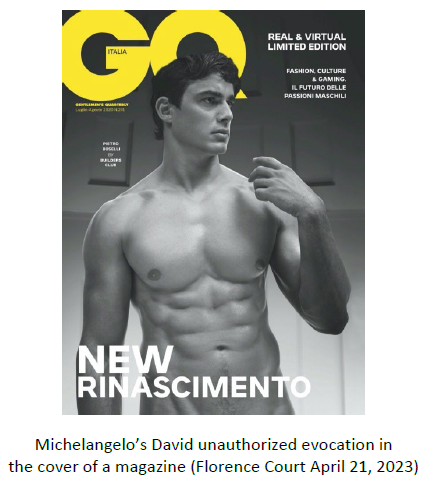Use and reproduction of Italian cultural heritage works: state of the art
15 Dec 2023 | Newsletter
According to articles 10 et seq. of ICHC, works having artistic, historical, archeological and ethno-anthropological interest, irrespective of their ownership (public or private) are protected by law. Articles 107 and 108 of ICHC provide that the competent public administration may allow third-party uses of an object – including an artwork – belonging to Italian cultural heritage, subject to the payment of royalties to be determined on the basis of – among other things – the type of use requested and the possible economic gain that the user would obtain from the use of that object (under article 108.3 bis it is clarified that non-profit uses of cultural heritage items for purposes of study, research, freedom of expression or creative expression, and promotion of the knowledge of cultural heritage do not require authorization). It is worth noting that the above cited provisions confer to public territorial bodies or cultural institutions not only the power to request a royalty to allow the use and reproduction (for economic exploitation) the protected works under their control but also the power to assess whether such possible uses are compatible with the cultural purpose of such works.
As a consequence of said of rules, the competent public authorities (e.g. the Uffizi Gallery in Florence) have relied on ICHC to contest in court and out of court unauthorized reproductions and attempted reproductions of cultural heritage assets such as reproductions of famous paintings or sculptures.
The following images show some of those cases:




This goes with the legal threat against Pornhub over the latter’s announcement that it would make ‘live’ versions of some of the paintings exhibited in inter alia the collection of Florence’s Uffizi museum as part of its ‘Classic Nudes’ series. Also worth highlighting is the Florence Court April 21, 2023 decision, which considers an infringement of articles 107 and 108 ICHC, not only the use of an actual image of a cultural heritage asset, but rather an image that evokes such asset

Specifically, the Florence Court upheld the infringement and damage requests based on the following:
-The competent Public Administration did not give consent to said reproduction and consent was not even formally requested (which is not wholly true, because before taking action, the Administration would give its consent provided the image would not be altered by the lenticular effect and the magazine be accompanied by an editorial article on the Gallery and Michelangelo’s work, as this was the only way to ensure a non-commercial use of David effigy).
-No payment was ever made for the reproduction.
-The reproduction was carried out in a manner that is equally unlawful, in that it alters the image of David, which is juxtaposed and indeed confused, with the image of a model which, according to the defendant company itself, is a sort of fashion icon, all in an openly advertising key.
-20,000 Euro are due as pecuniary damage based on the applicable tariffs fixed by the competent authority and the use of the image in a single issue of GQ Magazine;
-30,000 Euro damages are due as the image at issue is an infringement of article 9 of the Italian Constitutional Chart (The Republic promotes the development of culture and scientific and technical research. It protects the landscape and the historical and artistic heritage of the Nation) because by means of the lenticular technique, it has insidiously and maliciously combined the image of Michelangelo’s David with that of a model, thereby debasing, obfuscating, mortifying and humiliating the high symbolic and identity value of the work of art and using it for advertising and editorial promotion purposes. In fact, not only did the defendant company fail to ask the Administration for its consent to reproduce the work, but it also fraudulently prevented the competent body from assessing the compatibility between the use of the image of David and its cultural purpose and, on the contrary, it fraudulently used the image of David in a manner (that of the lenticular paper technique) on which the Director of the Accademia Gallery had already expressed her negative opinion, clarifying that it was a question of altering the image of the cultural asset, which, as such, could not have been authorized.
It is in this context on 11 April 2023 that the Italian Official Gazette published the Ministerial Decree No. 161, which contains guidelines for the determination of the minimum amounts of fees and charges for the use of works belonging to Italian Cultural Heritage. Two types of concessions and fees are listed. The first class includes the fees for the “reproduction” (e.g. photographic prints, digital images, video clips, slides etc). The second class includes the fees for the “use of space” (e.g. video, film and television shooting, photographic services, etc.). All the involved administrations are required to publish royalties and charges on their institutional websites, thus, making them available for potentially interested implementers.

